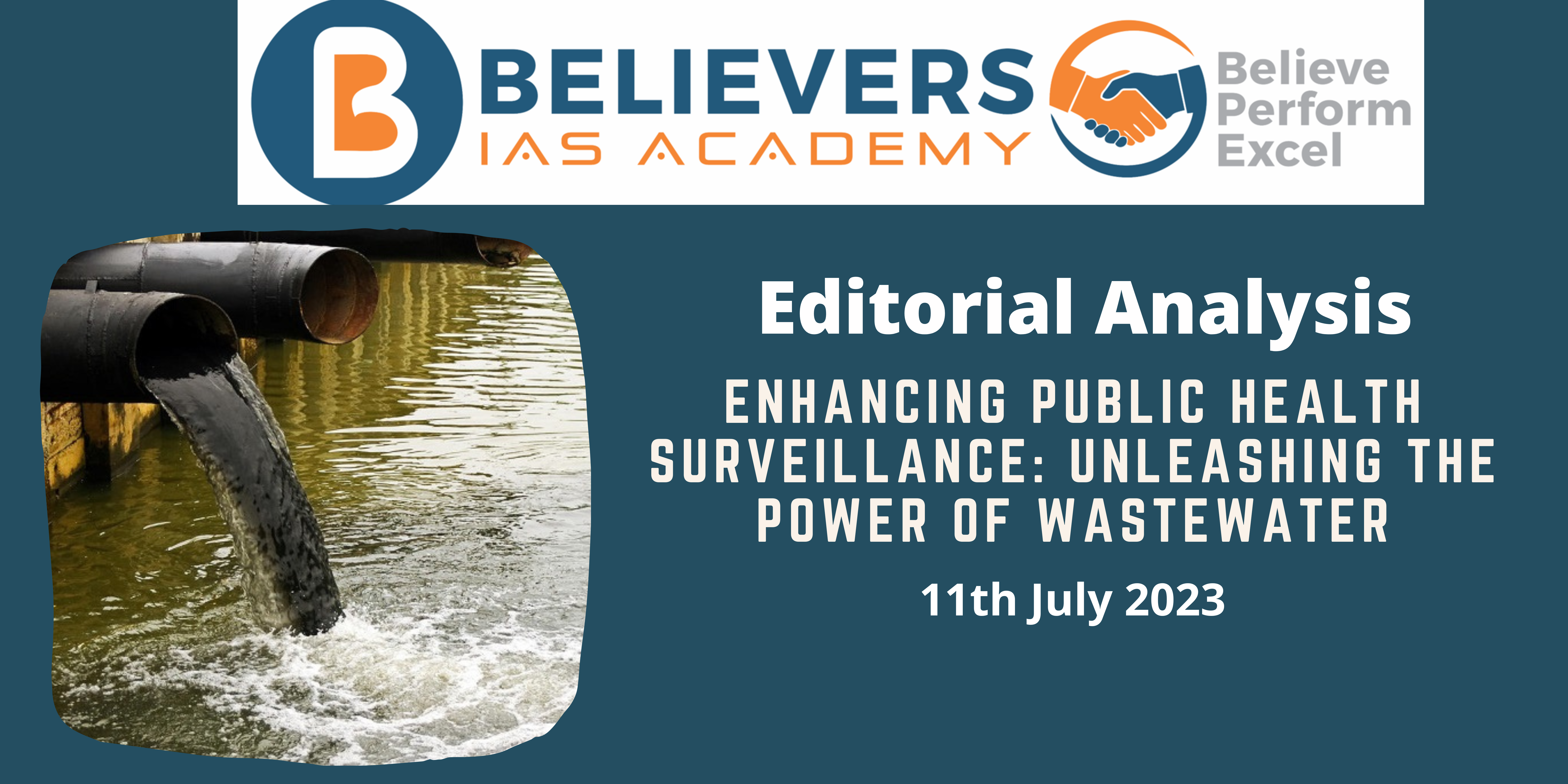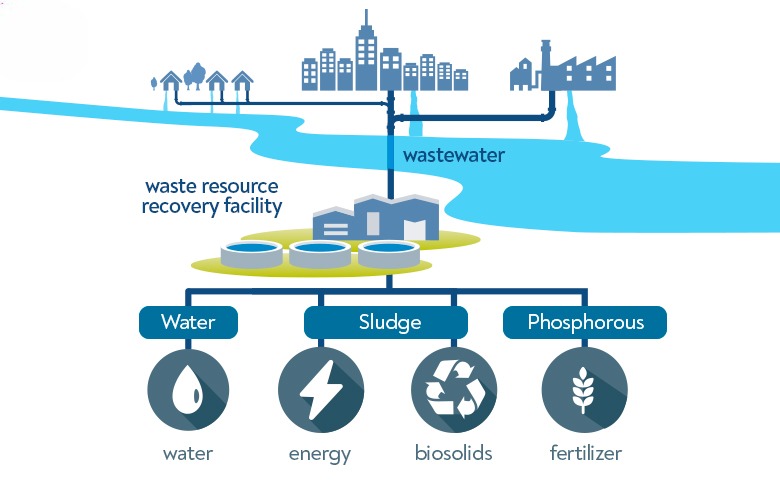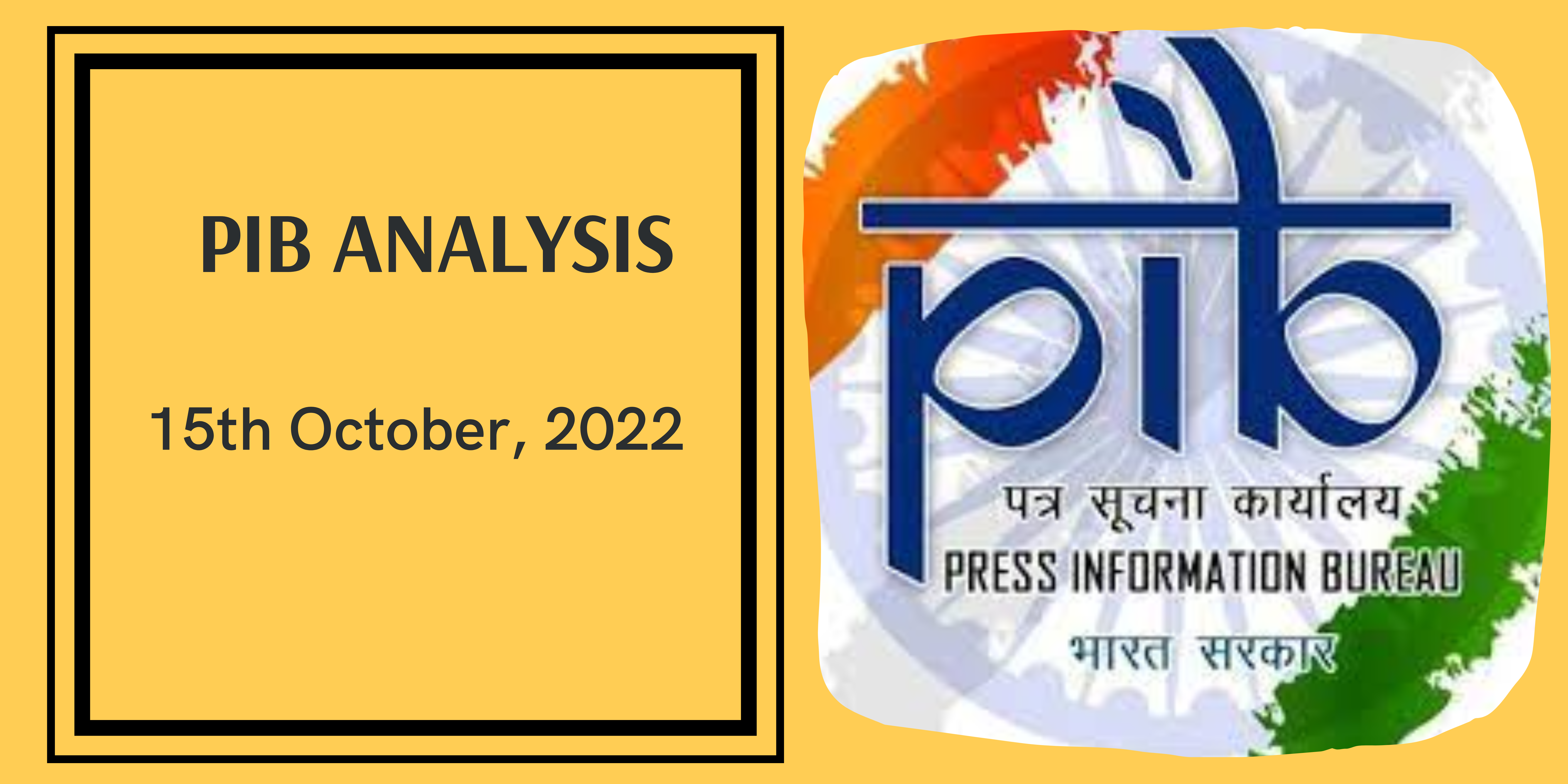Enhancing Public Health Surveillance: Unleashing the Power of Wastewater
Context:
The integration of wastewater surveillance into existing public health surveillance mechanisms holds great potential for revolutionizing disease prevention and control efforts exploring the benefits, challenges, and opportunities associated with harnessing the power of wastewater analysis for enhancing India’s epidemiological capabilities.
Relevance:
GS-03 (Environmental Pollution & Degradation)
Prelims:
- Waste Water Management
- SBM 2.0
- Open Defecation-Free (ODF) status
- AMRUT Mission
- Water (Prevention and Control of Pollution) Act, 1974
- The Environment (Protection) Act, 1986
- Central Pollution Control Board, Eutrophication, Bioremediation, Phytoremediation.
Mains Question:
- Discuss the potential of wastewater surveillance in bolstering public health efforts and the challenges and opportunities it presents for India’s disease monitoring and response mechanisms. (250 words)
Dimensions of the Article:
- Unveiling the Historical Relevance
- Resurrecting an Age-Old Strategy
- Unveiling the Benefits
- Charting the Path Forward
- The Power of Data Sharing
- Political Support and Funding
Unveiling the Historical Relevance:
- The extraordinary tale of John Snow’s investigative breakthrough during the devastating cholera outbreak of 1854 serves as a compelling reminder of the untapped potential that disease prevention and control hold.
- But what if Snow had access to today’s tools? Could he have foreseen the imminent outbreak and sounded the alarm? Such questions evoke curiosity about the possibilities and advancements in disease surveillance and prevention that lie ahead.
Resurrecting an Age-Old Strategy:
- The recent publication in The Lancet Global Health resurrects the long-established concept of utilizing wastewater for public health surveillance.
- Originally conceived more than eight decades ago as a means to monitor the spread of poliovirus, this approach played a pivotal role in India’s triumph over polio and has regained relevance during the COVID-19 pandemic as a tool for tracking the spread of SARS-CoV-2.
Unveiling the Benefits:
- The incorporation of wastewater surveillance into disease surveillance efforts offers numerous advantages in enhancing public health endeavors.
- This cost-effective approach eliminates the need for invasive individual samples, easing the burden on healthcare systems. Despite recent improvements, the existing surveillance system in India grapples with challenges such as uneven coverage and fragmented disease-specific efforts.
- By supplementing traditional data sources, wastewater surveillance can provide real-time insights into community-level disease patterns, often preceding clinical data.
Charting the Path Forward:
- To fully harness the potential of wastewater surveillance, it must be seamlessly integrated into existing surveillance mechanisms. Strengthening public health laboratory networks and incorporating wastewater sample testing into surveillance reporting can enable early disease detection, especially in areas with limited healthcare access and diagnostic capabilities.
- Furthermore, the Ayushman Bharat Digital Mission, a groundbreaking initiative aiming to establish a comprehensive online platform for healthcare services, presents an ideal avenue for integrating wastewater surveillance.
- Real-time disease spread tracking and targeted public health responses can be facilitated through the harmonious fusion of these endeavors.
The Power of Data Sharing:
- The promise of wastewater surveillance hinges on the foundation of extensive data sharing. This necessitates fostering an environment of accessibility and cooperative strategies both domestically and internationally.
- By providing health departments at all levels of government access to wastewater surveillance data, India can amplify its disease monitoring and response capabilities.
- Moreover, sharing this data with global health agencies can foster collaborative efforts in disease tracking and mitigation, strengthening the global health infrastructure and enabling swift responses to public health threats.
Political Support and Funding:
- India’s proactive stance on public health surveillance and resource mobilization serves as a promising foundation. As discussions emphasize the importance of innovation and implementation, the integration of wastewater surveillance aligns seamlessly with Niti Aayog’s current vision.
- India’s leadership role in international platforms like the G20 offers a remarkable opportunity to elevate the significance of innovative disease surveillance approaches, including wastewater sampling.
- By championing this agenda, India can garner international commitments, support, and position itself as a leader and coordinator in integrated public health surveillance. Through strategic collaborations and proactive leadership, India can pave the way for an alert, predictive, responsive, and robust model of disease surveillance.
Conclusion:
Embracing the power of wastewater analysis in public health surveillance holds immense potential for revolutionizing disease prevention and control efforts in India. By integrating wastewater surveillance into existing mechanisms, fostering data sharing, and securing political backing, India can position itself at the forefront of integrated public health surveillance. With a dedicated cadre of public health professionals and effective implementation strategies, India can unlock the vision of a proactive and responsive disease monitoring system, leading the charge in safeguarding public health.





